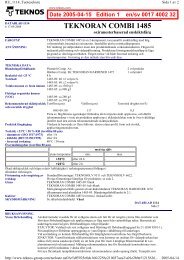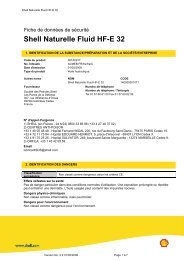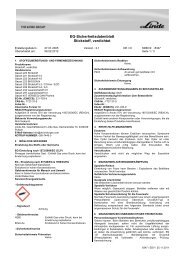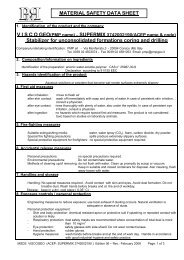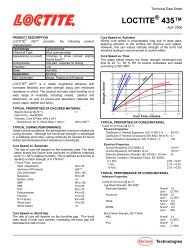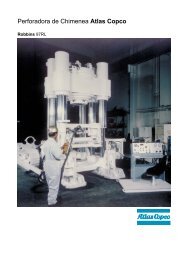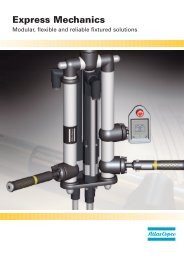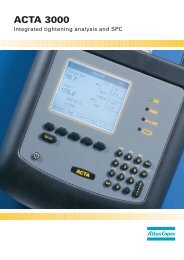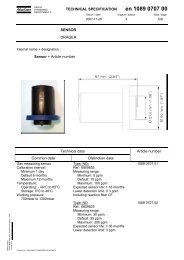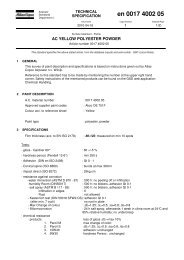Ergonomics - Atlas Copco
Ergonomics - Atlas Copco
Ergonomics - Atlas Copco
Create successful ePaper yourself
Turn your PDF publications into a flip-book with our unique Google optimized e-Paper software.
integrated over an eight-hour working day<br />
must not be confused with the emission val-<br />
ue 2.5 m/s 2 , above which the manufacturer<br />
must declare the vibration emission value.<br />
For more information, please refer to the<br />
<strong>Atlas</strong> <strong>Copco</strong> Pocket Guide Vibration exposure<br />
assessment for industrial power tools.<br />
Vibration control<br />
Power tool design involves a large number<br />
of parameters. The solution chosen reflects<br />
the designer’s view of an optimal compro-<br />
mise on all parameters. One of these param-<br />
eters is vibration.<br />
The appearance of oscillating forces<br />
These forces can arise in the tool itself,<br />
from the inserted tool or from the process in<br />
which the tool is used. A typical example of<br />
a power tool with built-in oscillating forces<br />
is a percussive tool where a piston is moved<br />
backwards and forwards in a cylinder. The<br />
motion is caused by compressed air acting on<br />
the front or back end of the piston, and at the<br />
same time acting with a reaction force on the<br />
machine housing. This oscillating force on<br />
the housing produces a vibration.<br />
Other examples are internal unbalanced<br />
rotating parts. Vibrations can arise from<br />
shocks due to badly designed gears or from<br />
badly designed counter-weights in oscillating<br />
sanders. When designing power tools, oscil-<br />
lating forces in the design concept must be<br />
avoided or offset.<br />
Such forces need not be of high magni-<br />
tude – a force of just a few Newtons can be<br />
large enough to initiate an unacceptable vi-<br />
bration in a machine housing and its handle.<br />
Grinding wheel imbalance is one of<br />
the main sources of vibration.<br />
Vibration can also be caused by imbalance<br />
of the inserted tool. For example, vibra-<br />
tions in hand-held grinding machines arise<br />
mainly from the imbalance of the grinding<br />
wheel. This imbalance depends on the qual-<br />
ity of the wheel and its precise fit on the tool<br />
spindle. Since the tolerances of the center<br />
107



